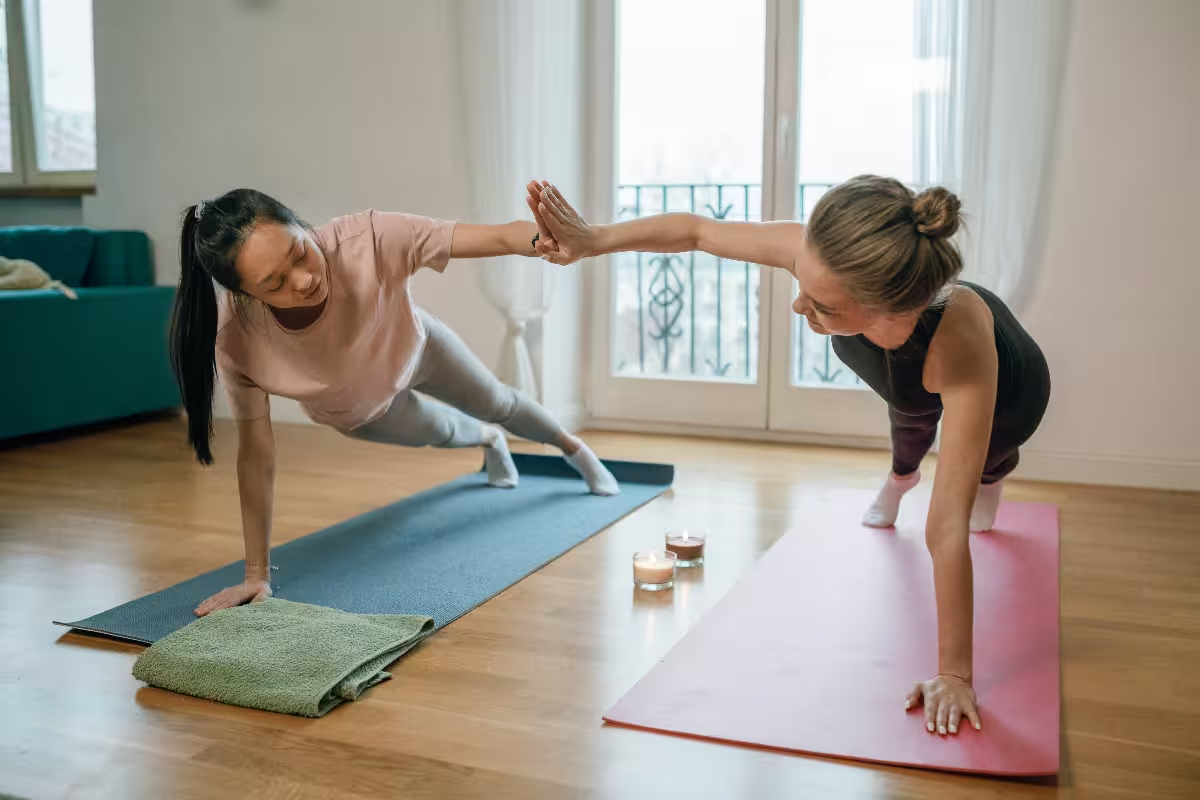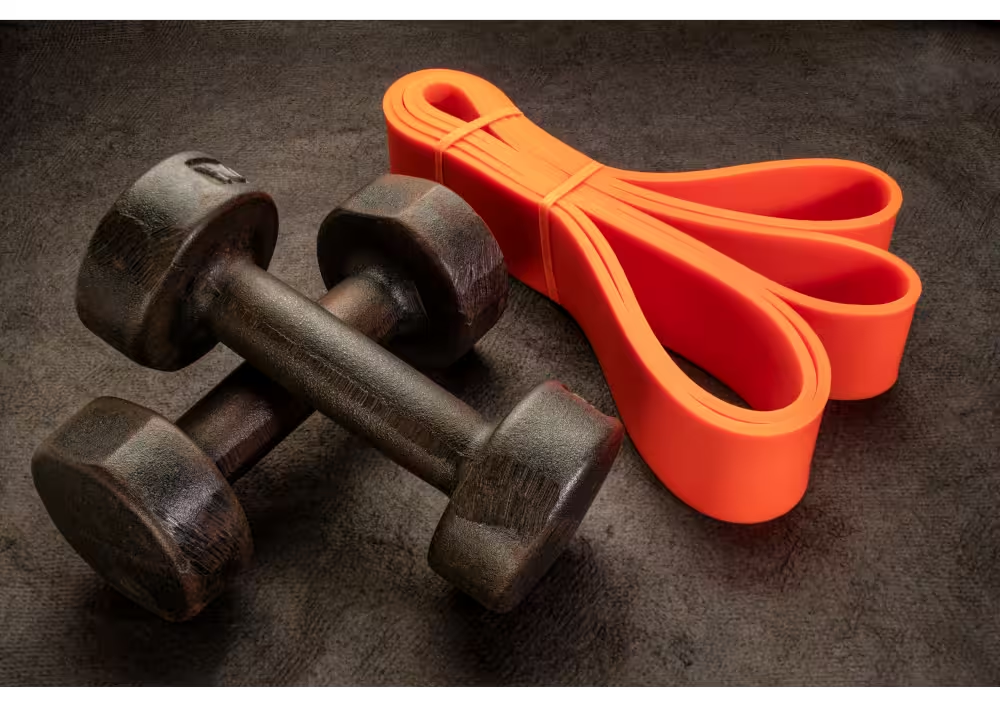The Best Strength Training Exercises for Runners
Introduction
Running is an excellent cardiovascular exercise that helps improve your stamina, boost your mood, and keep you fit.
However, you must complement your training with strength exercises to maximize your running performance and reduce the risk of injuries.
Strength training not only increases your power and endurance but also enhances stability and overall body strength.
There is an endless amount of strength exercises runners can do. In this blog post, I've chosen some of the most essential exercises that runners should include in their training routine.

Why Strength Training is Important for Runners
When it comes to training, the cardiovascular system adapts faster than our muscles and bones. This is a significant reason why runners often face a higher risk of injuries.
Just because you can run long distances doesn't mean your muscles and bones are fully prepared for the impact.
But here's the good news: strength exercises can help your muscles, bones, and connective tissues adapt faster. By including strength training in your routine, you can build the
necessary strength and resilience to support your running goals.
However, it's essential to be cautious. Doing these exercises incorrectly can lead to more harm than good. Proper form is crucial for preventing injuries during strength training.
If you're new to these exercises, consider finding a coach who can guide you and correct your technique.
How Much Strength Training Should Runners Do?
Ideally a runner should do strength exercises 2-3 times a week. This is not possible for all runners and even if you can only manage once a week, it will benefit you greatly. Anything is better than nothing.
A strength training session doesn't have to be an hour long session. 20 minutes of strength exercises after you easy runs is a very good amount.

Why some runners avoid strength training
There's a common misconception that resistance training will instantly make you look like a bodybuilder. However, this couldn't be further from the truth.
Building substantial muscle size requires a specific approach that's quite different from regular strength training.
To become a bodybuilder, you'd need to consume a large number of calories every day and follow a structured weight-training program focused on gaining muscle mass.
This kind of training is far from the typical endurance-based strength workouts most people do. Moreover, you'd need to minimize cardiovascular exercises, as they
burn calories that could otherwise be used for building muscles.
For runners, incorporating a strength-training program can enhance leg strength without adding significant muscle mass. This will make you run faster and minimize the risk of injuries.
So rest assured, you won't unintentionally bulk up like a bodybuilder from regular strength workouts.
The Most Important Muscle Groups to Strengthen for Runners
For runners, it's essential to target specific muscle groups to improve performance, prevent injuries, and enhance overall running efficiency. The most important muscle groups to strength train for runners are:
Legs
These muscles are primarily responsible for providing power, stability, and movement during running. They are vital for generating force and propelling you forward with each stride.
Quadriceps
Positioned at the front of your thighs, the quadriceps are crucial for powering your strides and providing stability during running.

Hamstrings
Located at the back of your thighs, the hamstrings play a significant role in controlling your leg motion and preventing injuries like hamstring strains.

Glutes
The gluteal muscles (glutes) are essential for generating power and propelling you forward during each stride.

Calves
Strong calf muscles assist with push-off and help absorb impact when your foot lands.

Hip Flexors
The hip flexor muscles are critical for lifting your knees and facilitating a smooth running motion.
Adductors and Abductors
These muscles on the inner and outer thighs contribute to leg stability and balance during running.

Ankles and Feet
Strengthening the muscles in your ankles and feet can enhance foot strike mechanics and reduce the risk of common running-related foot injuries.
Core
A strong core (abdominals, obliques, and lower back) provides stability and helps maintain proper running posture, reducing stress on other muscles and minimizing the risk of injuries.
Understanding the distinction between the inner and outer core muscles is crucial, and it's essential to train both effectively. People tend to focus solely on the outer unit, considering it as the core,
which may lead to overworking those muscles and neglecting the inner unit core muscles. This can result in an imbalance and less activation of the vital inner core musculature.
Inner Core Muscles
The inner core muscles are deep stabilizing muscles that include the transverse abdominis, multifidus, diaphragm, and pelvic floor muscles.
These muscles are close to the spine and provide essential support and stability. They act like a natural corset, helping to brace and protect the spine from excessive movement and impact.
Strengthening the inner core muscles is crucial for maintaining a solid foundation during running and preventing lower back pain or injuries.
Outer Core Muscles
The outer core muscles include the rectus abdominis (commonly known as the "six-pack" muscle), external obliques, and the erector spinae muscles, running alongside the spine.
These muscles are more superficial and play a significant role in rotational movements and bending. They assist in controlling movement during running and provide additional support for the spine and pelvis.
Equipment
You don't need any equipment to do strength exercises, you can use your body weight. However, once you get stronger, it can be beneficial to use equipment like dumbbells, resistance bands, kettlebells, balls etc. to make the exercises heavier and get stronger
The Most Important Strength Exercises for Runners
There is an endless amount of strength exercises runners can do to improve their endurance, stability, and overall body strength. Here are a few of the most important ones:
Squats
Squats are a classic strength exercise that targets the muscles in your lower body. By incorporating squats into your routine, you can strengthen your quadriceps, hamstrings, glutes, and calves.
These muscles are crucial for running mechanics and can help propel you forward with each stride.
Proper squat form is essential, so when you do squats, keep your knees in line with your toes and ensure your back stays straight throughout the movement.
This technique will reduce the risk of injuries and maximize the benefits of your exercise.
As you become more comfortable with squats, you can challenge yourself by adding weights. It's a great way to increase the intensity and continue progressing in your fitness journey.
Just remember to start with proper form and gradually increase the weights as you gain confidence.

Lunges
Lunges are another fantastic exercise for runners, as they focus on the same muscle groups as squats while engaging the hip flexors and adductors. This exercise helps improve balance and stability, which can enhance your running form and reduce the risk of injury.

Forward Lunges
In a forward lunge, Step one leg forward, lowering your body until both knees form approximately 90-degree angles. Ensure your knees stay aligned with your ankles, and keep your upper body upright throughout the exercise.
The forward lunge primarily targets the quadriceps, glutes, and hamstrings.
Backward Lunges
In a backward lunge, you Step one leg backward, lowering your body until both knees form approximately 90-degree angles. Again, make sure your knees stay aligned with your ankles, and keep your torso upright throughout the exercise.
The backward lunge focuses on different muscles than the forward lunge, including the hamstrings, glutes, and calves.
While both forward and backward lunges work the quadriceps, glutes, and hamstrings, the emphasis on each muscle group varies. Forward lunges tend to place more emphasis on the quadriceps, while backward lunges focus more on the hamstrings and glutes.
Additionally, both types of lunges also engage the core muscles for stability and balance throughout the movement.
Deadlift
Deadlifts are a powerful compound exercise that targets the hamstrings, glutes, lower back, and core muscles. By strengthening these muscle groups, you can improve your running efficiency and reduce the risk of lower back and hamstring injuries.
Remember to maintain a neutral spine throughout the exercise and keep the barbell or dumbbells close to your body as you lift.
If you're new to deadlifting, consider seeking guidance from a certified trainer to ensure proper form and prevent injury.

Planks
Core strength is crucial for maintaining proper running posture and stability. Planks are one of the most effective exercises for strengthening the entire core, including the abdominal, oblique, and lower back muscles.
A strong core can help improve running efficiency, reduce unnecessary movements, and prevent overuse injuries.
Start with the basic plank by supporting your body on your forearms and toes, maintaining a straight line from your head to your heels. Hold the position for as long as you can, gradually increasing the duration over time.

Step-ups
Step-ups are an excellent exercise for enhancing leg strength and stability. They specifically target the quadriceps, glutes, and hip flexors.
Step-ups mimic the motion of running and help improve single-leg stability, which is essential for maintaining balance and preventing common running injuries.
To perform a step-up, simply step onto a bench or platform with one leg, driving your body upward, and then return to the starting position. Don't forget to alternate legs to work both sides evenly.
As an Amazon Associate I may earn a small commission from purchases at no extra cost to you


